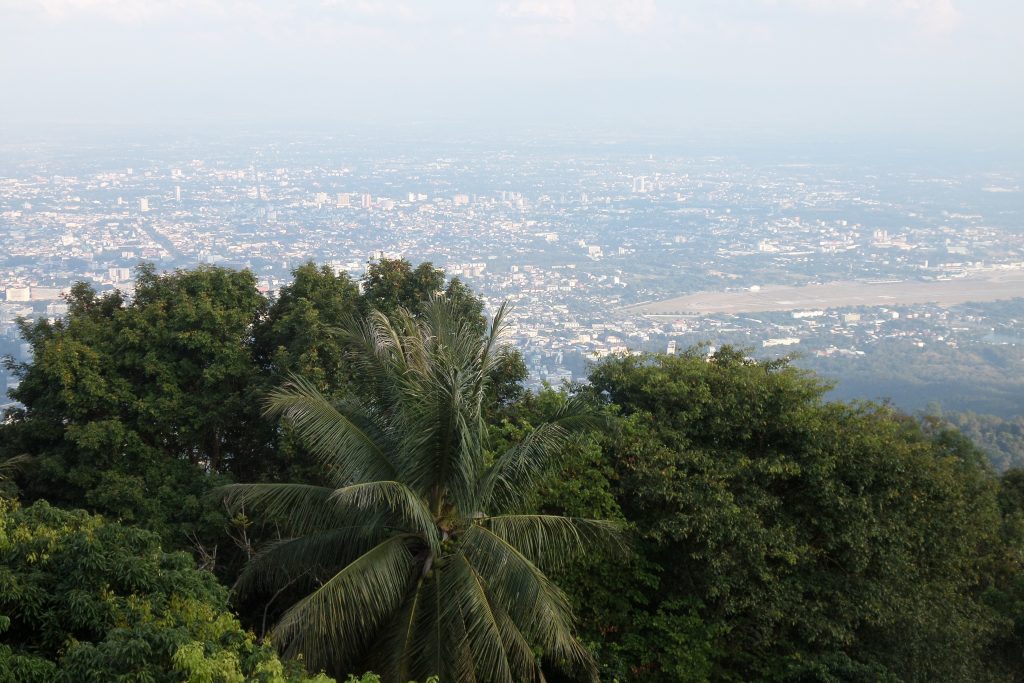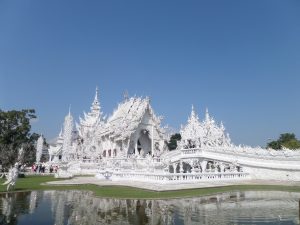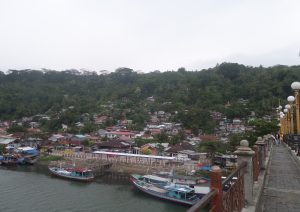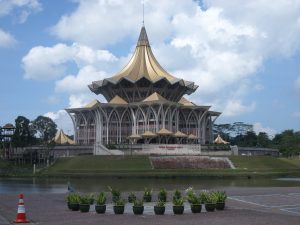- 1. Where is Chiang Mai and why go there?
- 2. The city walls and its gates
- 3. The historical centre
- 4. Buddhist temples
- 5. Three Kings monument
- 6. Night markets, Sunday markets
- 7. Nimmanhaemin Road
- 8. Loi Krathong Festival
- 9. Doi Suthep
- 10. Day trip to Chiang Rai and the Golden Triangle
- 11. Accommodation
- 12. Food and shopping
- 13. How to get to Chiang Mai
1. Where is Chiang Mai and why go there?
When it comes to northern Thailand, the first city that most visitors will think of is definitely Chiang Mai. It is a major tourist destination, and besides the beaches, it is a city that everyone who has more than a few days to spend in Thailand will have on their list of must see places.
Are you a digital nomad?
Check out my rating of Chiang Mai as a digital nomad destination in this other post.
Chiang Mai is a larger city in the north of Thailand. Its population is below 200.000, but the metropolitan area has over 1 million inhabitants. You won’t feel the city overwhelming though, especially if, like most tourists, you stay in the historical city centre rather than in, for example, the much more fashionable and more developed Nimmanhaemin district.
The city has enough sights to keep you busy for several days even if you like to cram as many things into a short holiday as possible. But if you prefer a more relaxed way of spending time in a new place, you can easily spend several weeks in Chiang Mai. (Indeed, may digital nomads spend several months there, and even return after their visa expires.)
Below, I will list some of the most popular and most famous sights both in Chiang Mai and in the larger region of northern Thailand.
2. The city walls and its gates
Chiang Mai was founded as a city in about 1300. It had a shape of a nice square, and it had a protective wall and a moat around the city from the beginning. Large parts of the city wall have survived, and you can see them this very day too, although some parts of course had to be restored. You can also see the main gates, and of course the moat all along the walls on the outside.
The gates and the walls are interesting to look at during the day, but they will be even more spectacular in the evening with the lights on. During festivals, the walls, the gates and the moat are all utilized nicely. I was in Chiang Mai during the Loi Krathong festival, when people make lanterns with a candle on it and place them on the water of the moat, and also fly them.
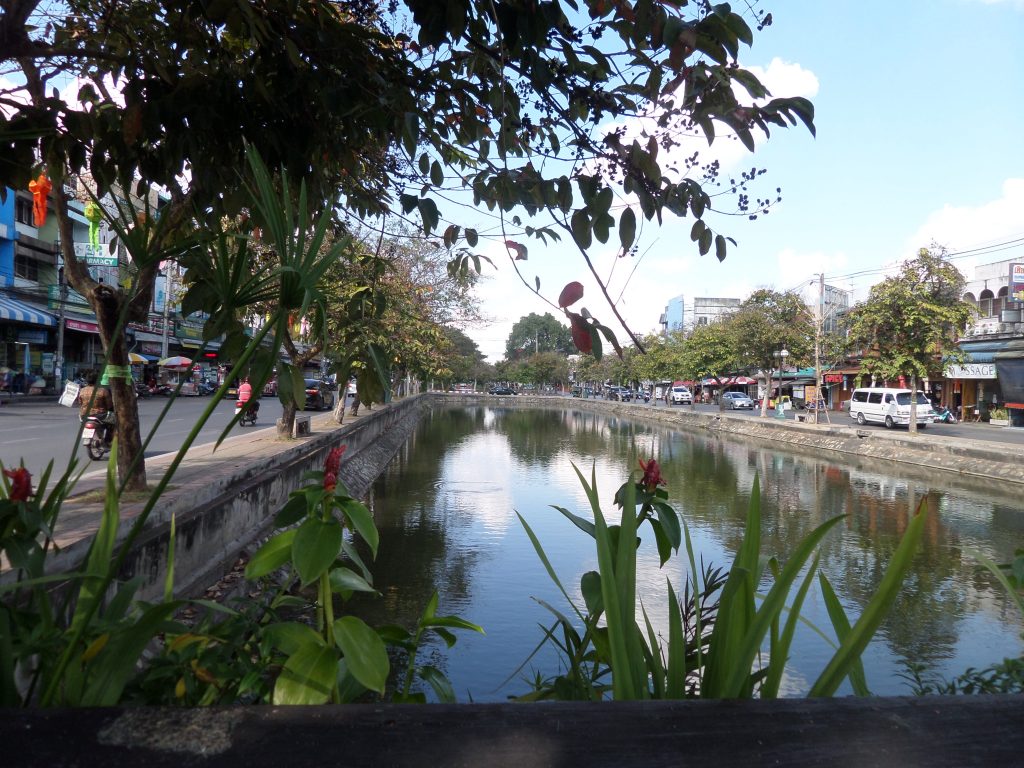
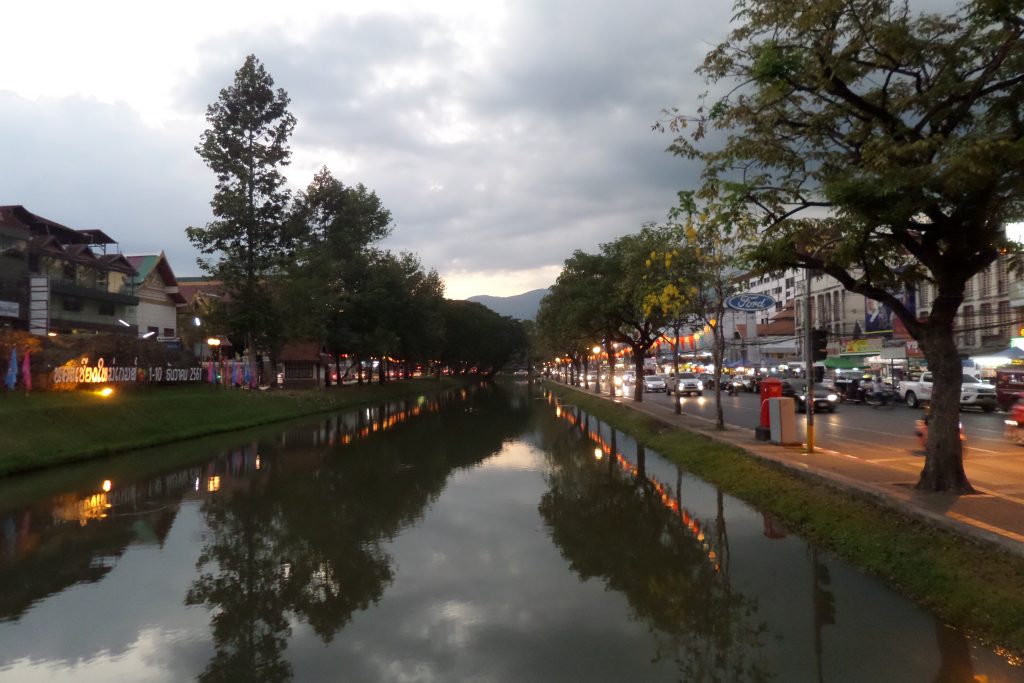
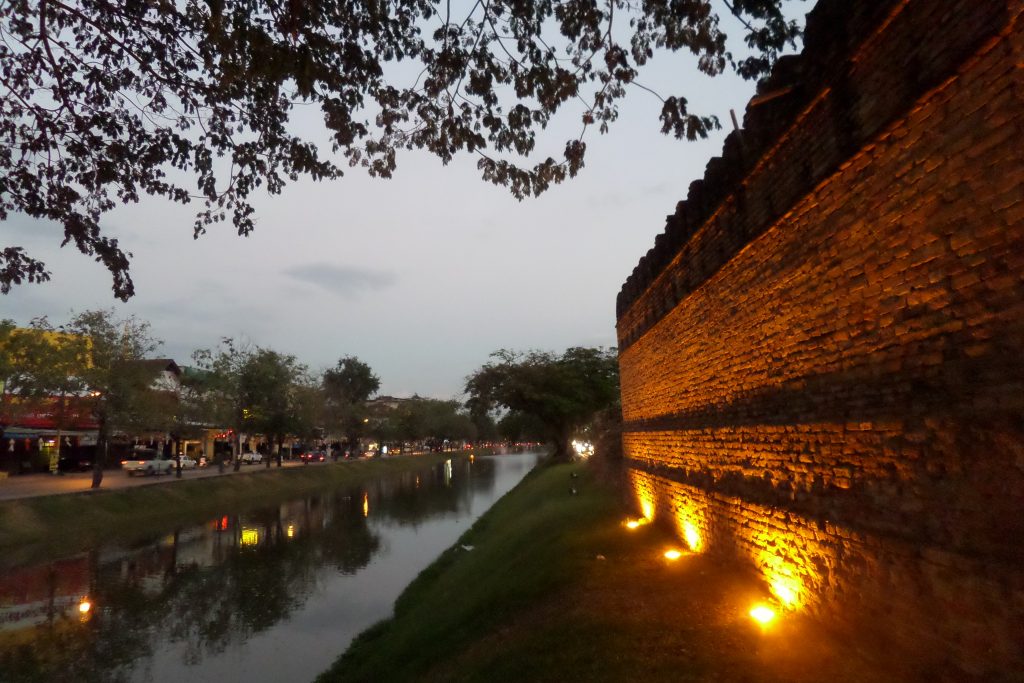
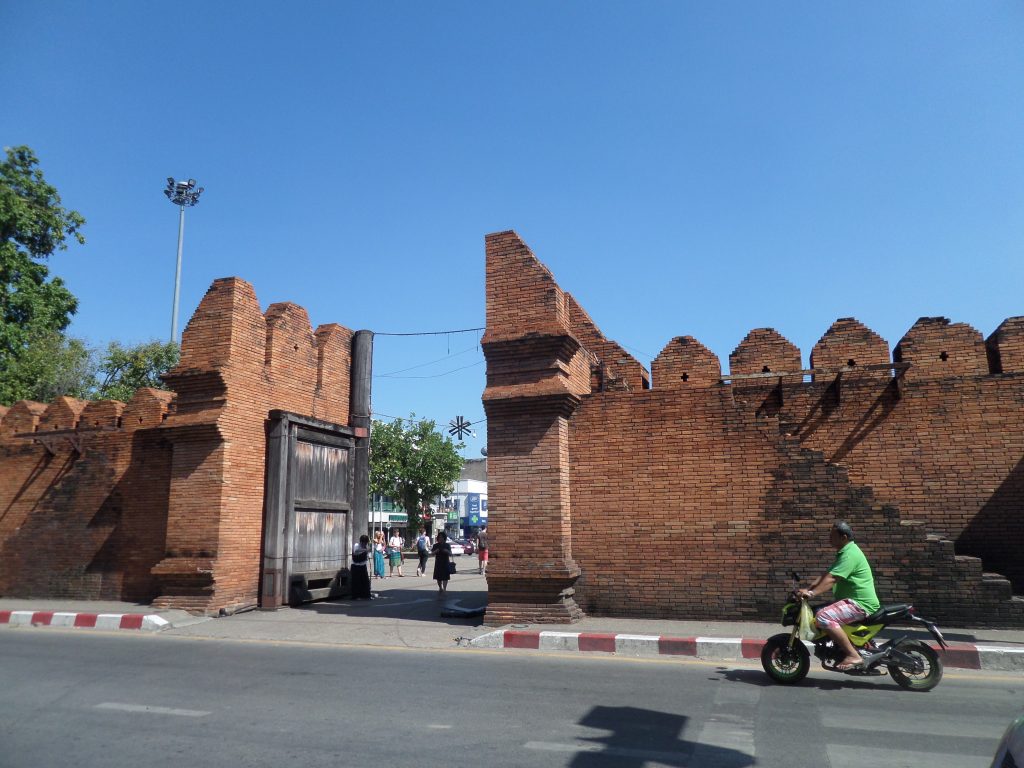
3. The historical centre
The historical centre of Chiang Mai is everything inside the city walls. This is a smallish area, where you can easily walk. You will find nice little narrow streets with pretty houses and excellent open air cafés, markets and clubs for the night.
You will also find a lot of restaurants and other shops here, and most of the tour agencies also have their offices in this area.
4. Buddhist temples
The area inside the square is also home to most of the temples of Chiang Mai – of which there are literally hundreds – some sources say more than 300. There are some streets, where you can find buddhist temples right next to each other, temple after temple. Some of them look really beautiful, while some others will look just yet another buddhist temple. Many guidebooks recommend some of them, like Wat Phra Singh or Wat Chedi Luang, but I found that some which are not on the list of recommendations are perhaps nicer than some of the more famous ones. I was living next to Wat Rajamontean in Sri Poom road, which looked really gorgeous, especially at night. Some of the temples charge and entrance fee, some others are free to visit.
So my recommendation is: just look at whatever temple you find interesting when you are walking in the historical centre, and miss any that you don’t fid inviting enough, and you won’t be disappointed.
As far as I’m concerned, by the time I had reached Chiang Mai during my travels, I had seen so many temples, that I was simply not interested in new ones any more. There was one interesting thing for me though: quit a few of the temples have a large garden, and these gardens are often used by vendors and whole markets. I simply called them temple markets.
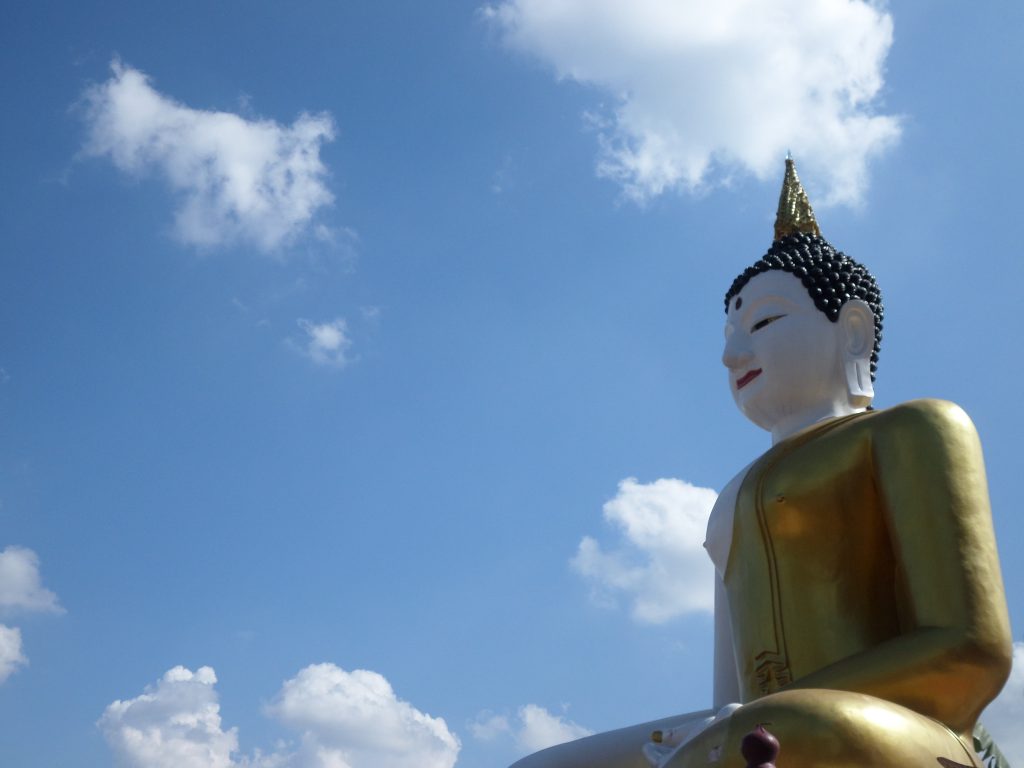
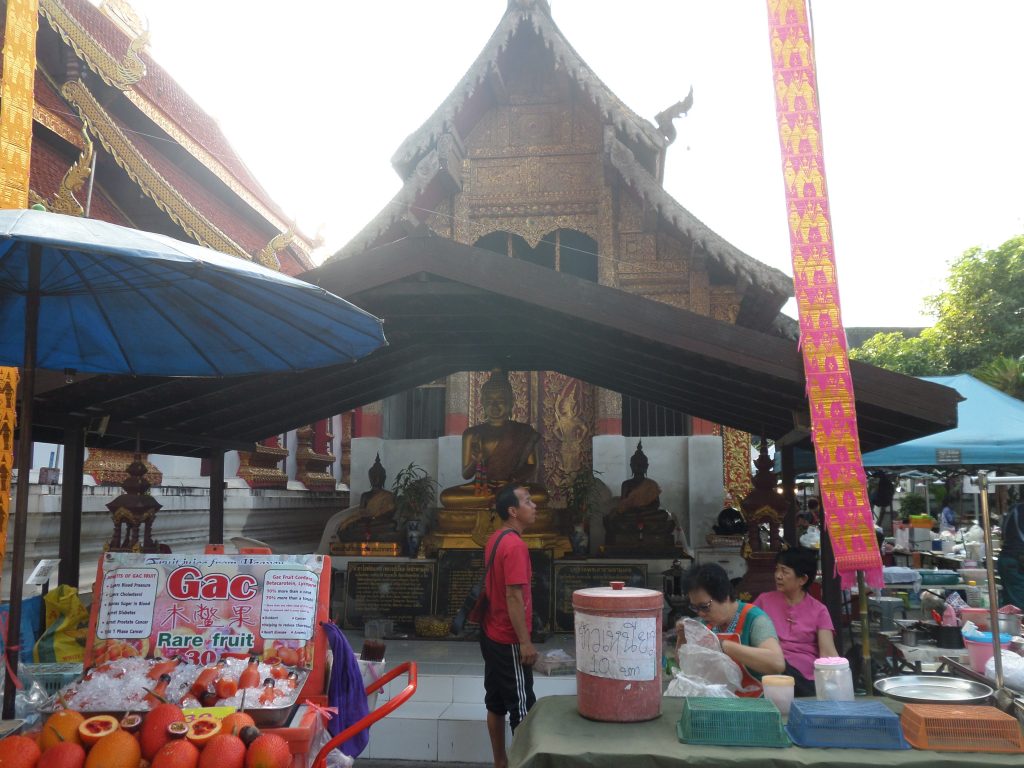
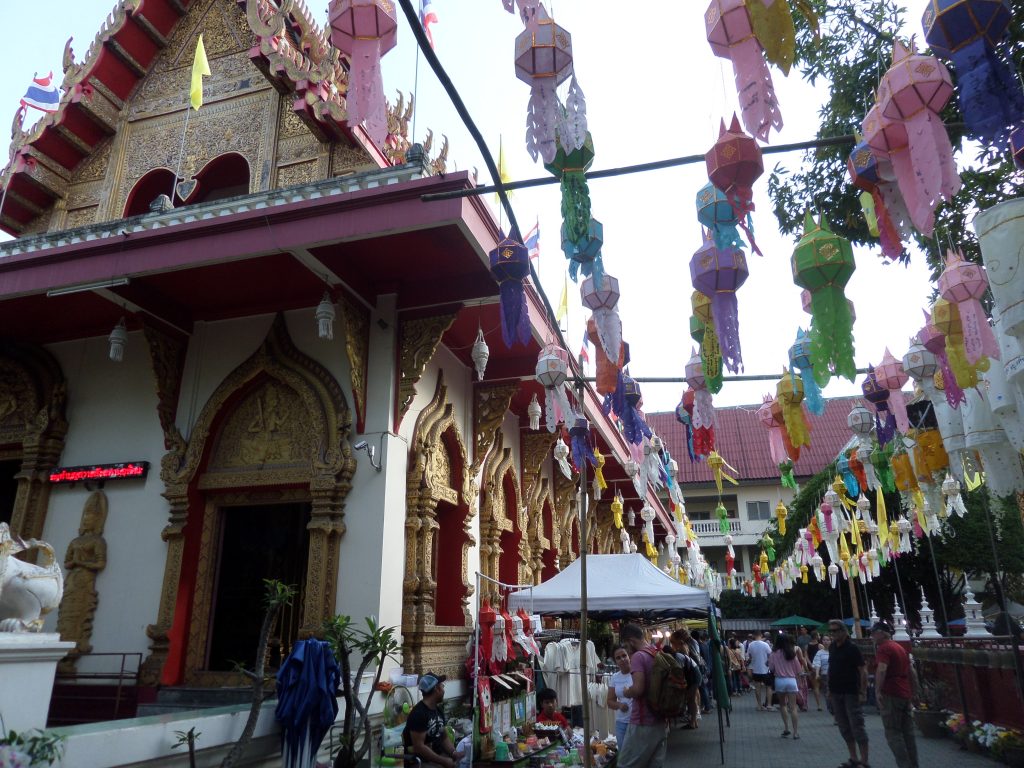
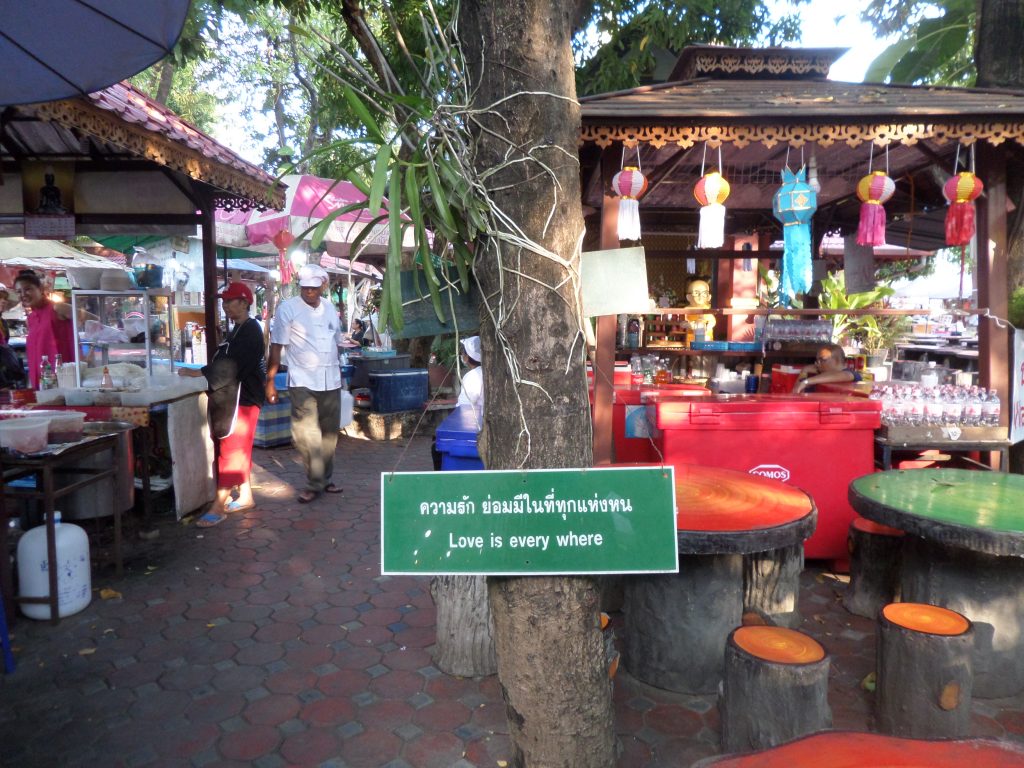
5. Three Kings monument
In almost the exact centre of the square shaped city centre stands a very pretty monument as a memorial devoted to the three kings who are regarded the founding fathers of Chiang Mai: Mengrai, Ramkhamhaeng and Ngam Muang. In reality, it was of course only one of them, King Mengrai, who built the city in 1293.
The square itself if a very nice place too, but I really loved the statues too. You see three good looking young men rather than what you would expect from a king statue elsewhere in the world.
The monument is a holy place: you must take off your shoes if you go near it, and you often see local people praying in front of the statues (or saluting them with the traditional wai).
Opposite the monument across the street, you will find the Lanna Folklife Museum, which is not awfully interesting, but still worth the time and money (90 baht), once you are there. Also, learning about the Lanna is just inevitable in Chiang Mai, since you will find the name just about everywhere as brand names or shop names. The Lanna is an ethnic group, and there was a powerful Lanna kingdom here, too. So if you are interested, visit the museum or read more about them on Wikipedia, for example.
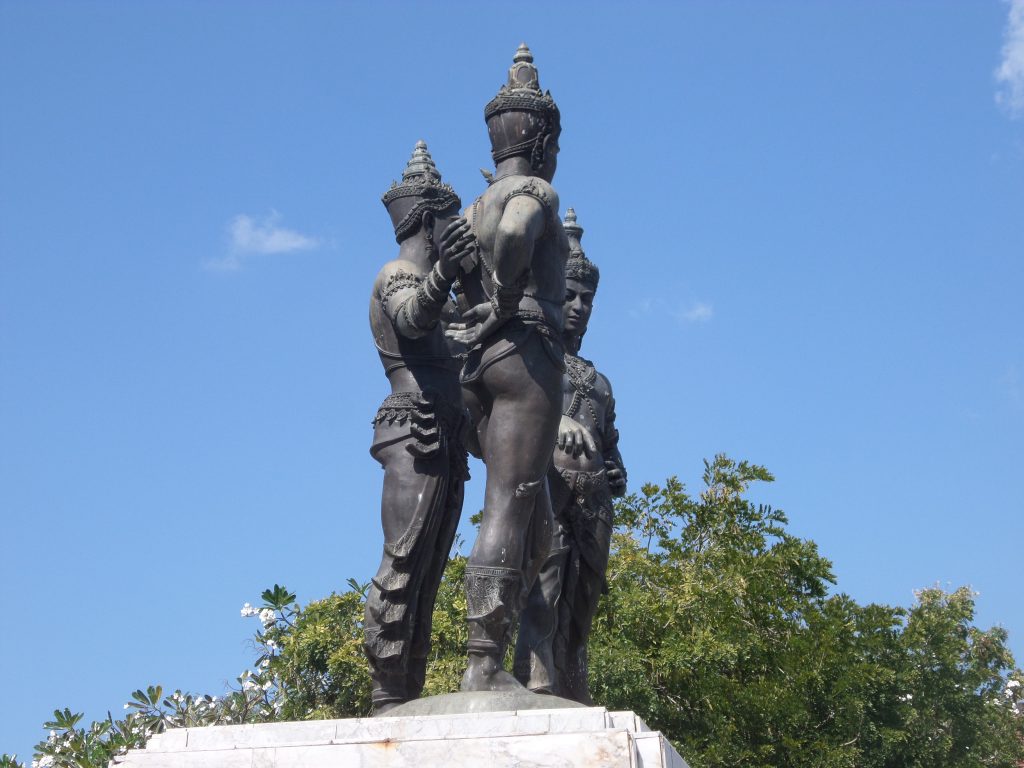
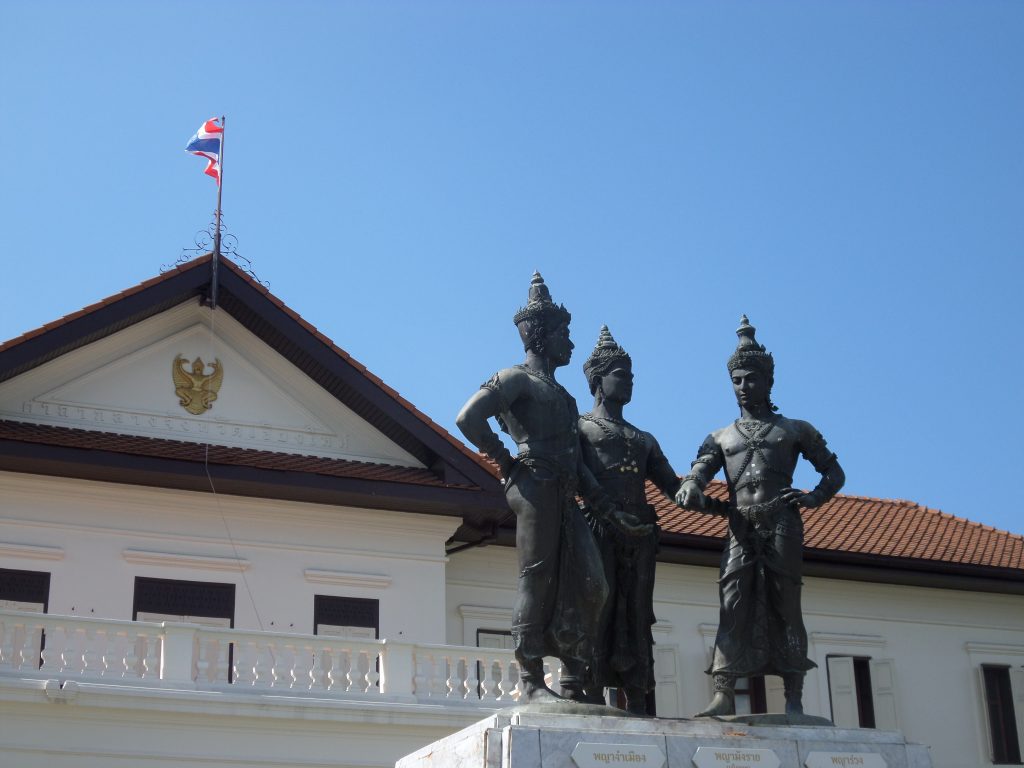
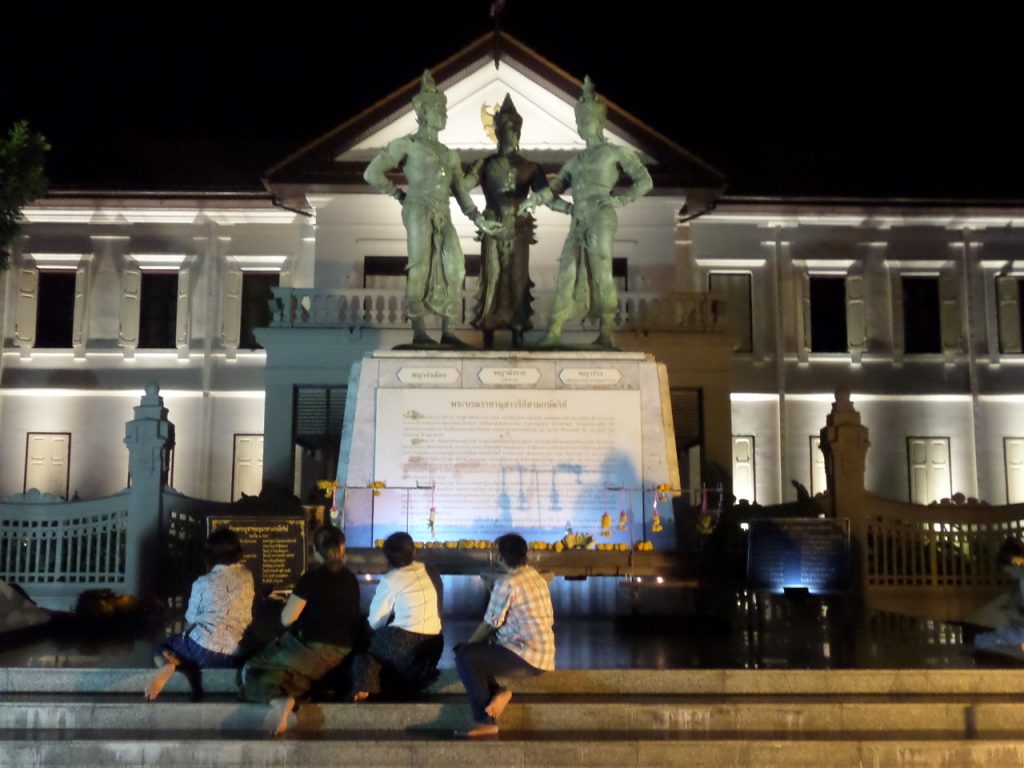
6. Night markets, Sunday markets
There are several weekend markets in central Chiang Mai on Saturdays and Sundays. One of them is all along Rachadamnoen street, and the other one is just outside the city walls in the south, at the Pratu gate. Both will sell every kind of clothes, souvenirs, jewellery and whatever you can think of, and they also have very good food stalls. Both, however, are incredibly crowded, so if you want to avoid the crowd, arrive early, or find spots that are not completely jammed. Prices are good, although I only bought T-shirts there and of course food.
7. Nimmanhaemin Road
If you want to see the more modern part of Chiang Mai, go to the Nimmanhaemin district, which is very near (walking distance) from the north gate. There, you will find huge modern malls, fashionable shops, expensive restaurants and cafés and a more chich crowd perhaps.
Nimmanhaemin is also recommended by some expat sites as an area to live in, which I don’t really understand, to be honest. I was staying in the street next to the city wall in the north (Sri Poom road), and enjoyed it immensely. I often went to Nimmanhaemin too, to do some shopping in the large supermarkets and to simply look around, and I have to tell you that I was happy that I chose the inner city as a place to stay. Nimman (as it is sometimes called), is much more expensive that anywhere else, it is much more crowded than the city centre, and walking there was much less fun: the oise, the pollution and the crowds make the area less attractive for me. But to each his own. If you want to show off, find a place in Nimman.
But with that being said, I also went to Nimman whenever I needed something that could not be found in the small shops.
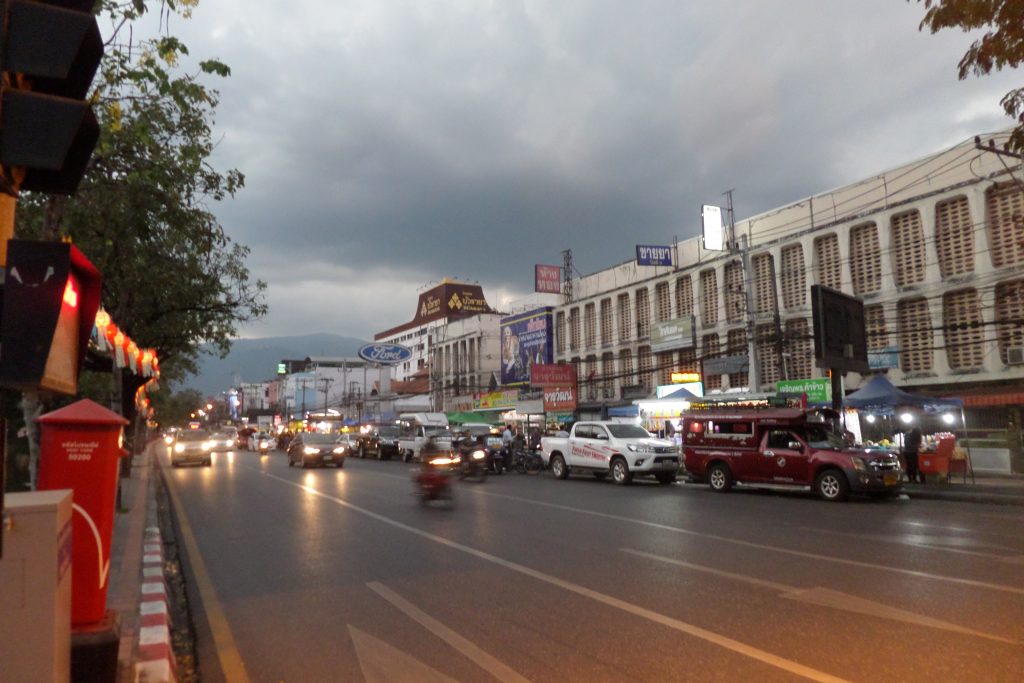
8. Loi Krathong Festival
Loi Krathong is a major festival not only throughout Thailand, but is perhaps most spectacular in Chiang Mai. According to Wikipedia, the name means “to float a basket”. This refers to the tradition of making small “baskets” decorated with flowers and banana leaves and candles, and then placing them on the water, with the candles lit. In Chiang Mai, this means that the moat around the city centre will be decorated with floating lights all along the way, a gorgeous sight.
Besides the baskets floating on the river, people make sky lanterns too, which are released into the air, and when hundreds or even thousands of people do the same, the whole night sky is looks like it is full of stars floating gracefully. There are also fireworks at many places at night, so at this time, you should definitely not stay inside!
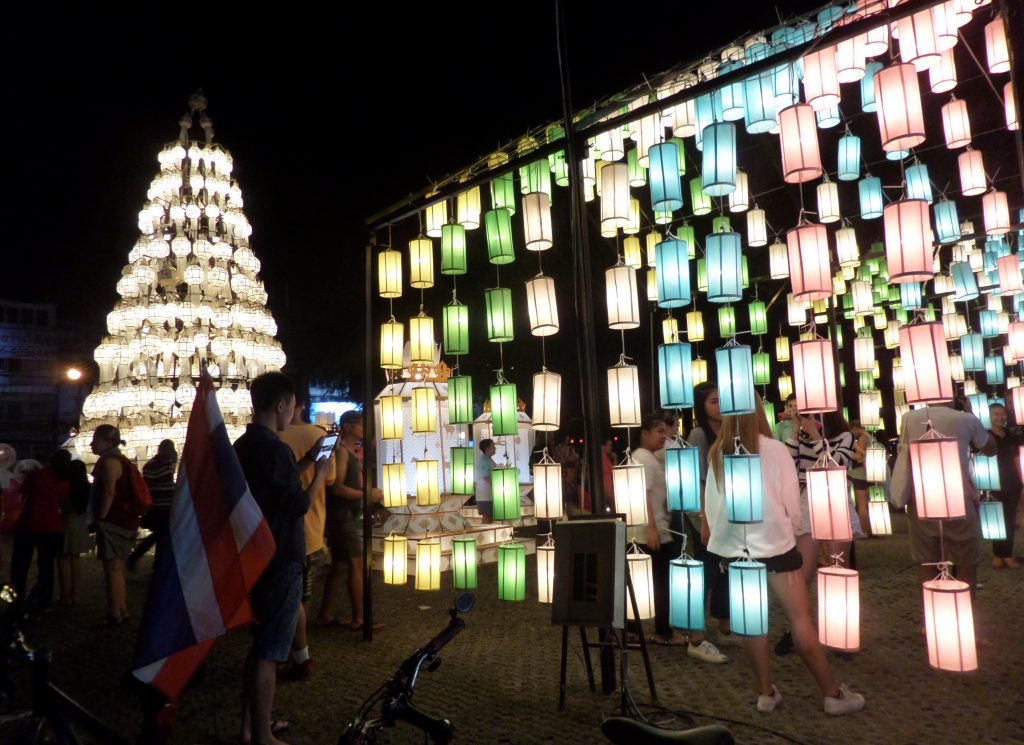
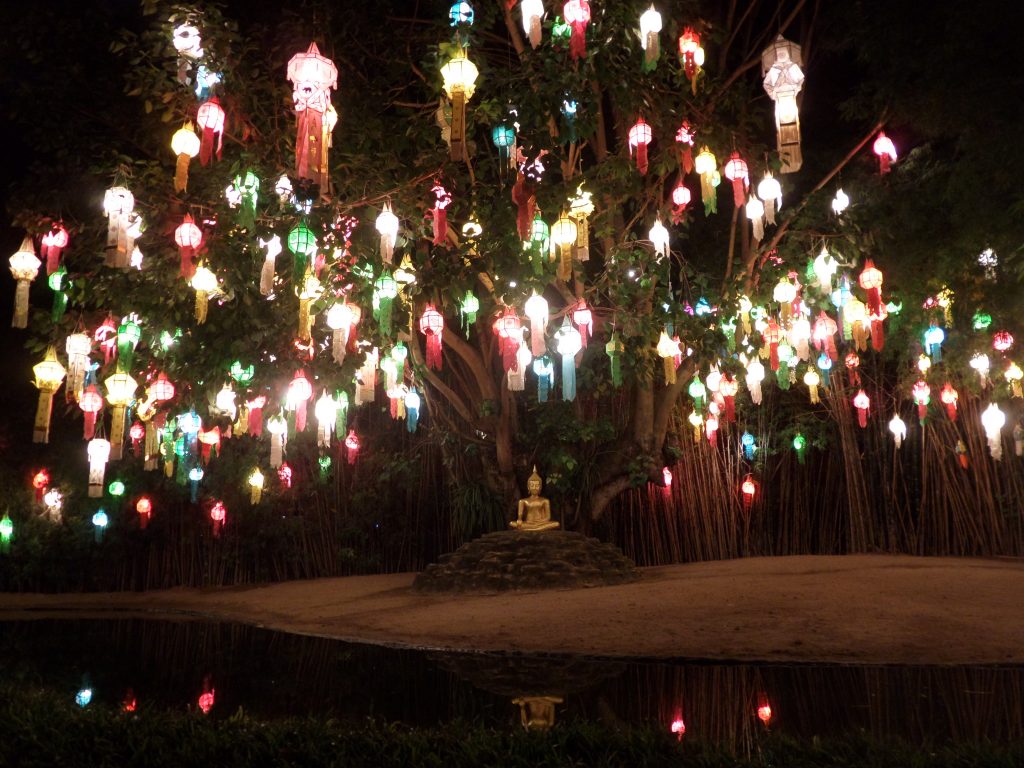
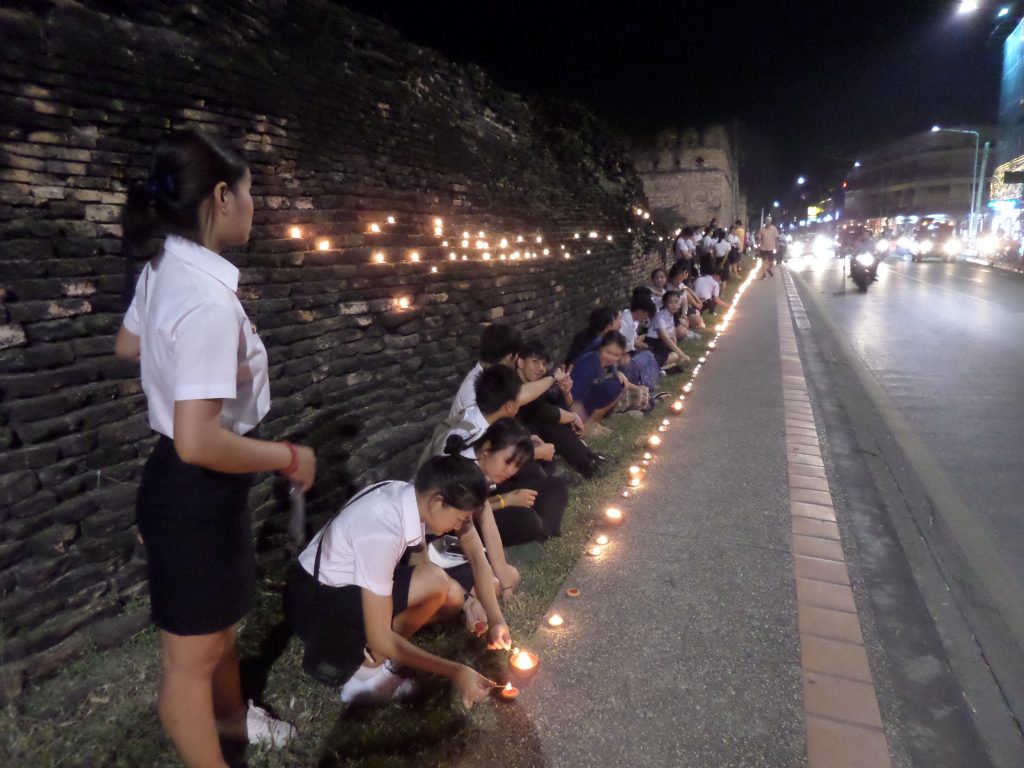
9. Doi Suthep
Doi Suthep is a buddhist temple just outside the city of Chiang Mai, and it is a major tourist sight besides being a holy place for buddhists. Because it is az especially popular sight, I have written a separate post about it and how to get there from Chiang Mai city centre. See that post for more details.
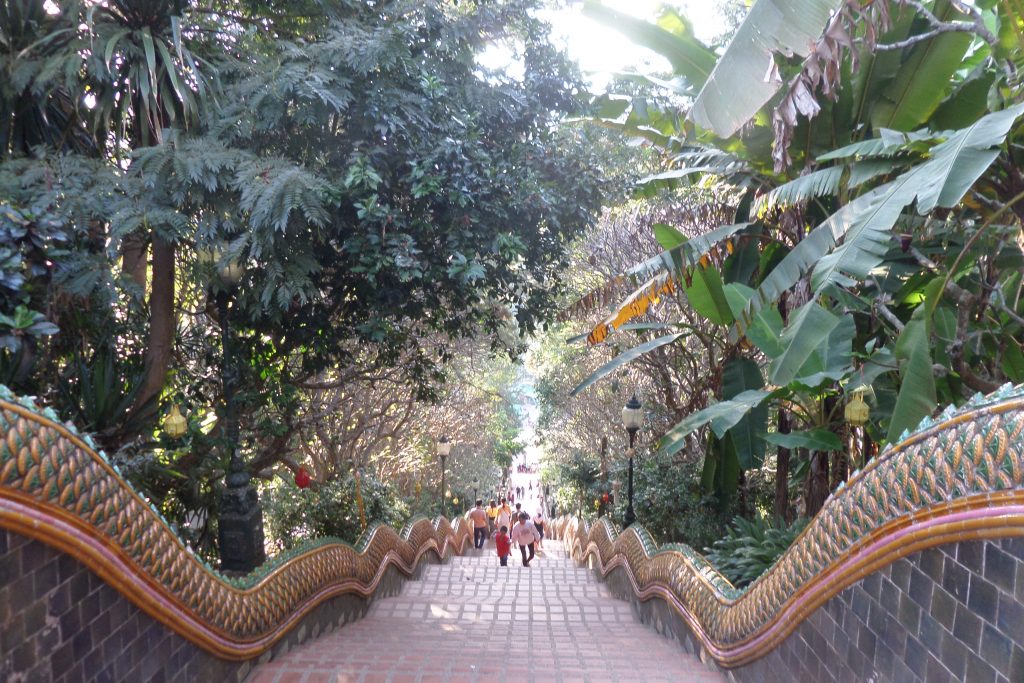
10. Day trip to Chiang Rai and the Golden Triangle
The Golden Triangle is the (in)famous area at the border of Laos, Myanmar and Thailand. If you look at the map, it is more than 200 km from Chiang Mai as the crow flies, so it is a long way, especially if you want to stop at several sites on the way. Still, it is doable during a day trip from Chiang Mai, starting early in the morning and returning late at night. I did that myself, and it was a most ne of the most memorable experiences that I had during my travels (and that means a lot of travelling).
During a typical day trip, you will be able to see the famous White Temple, a long-neck Karen village, the Blue Temple (my favourite), and of course the Golden Triangle, including a short boat ride on the Mekong river and a brief visit to the Lao bank, where you will find a tourist market.
If you are interested in more details, read my separate post about how to visit the Golden Triangle on a day trip.
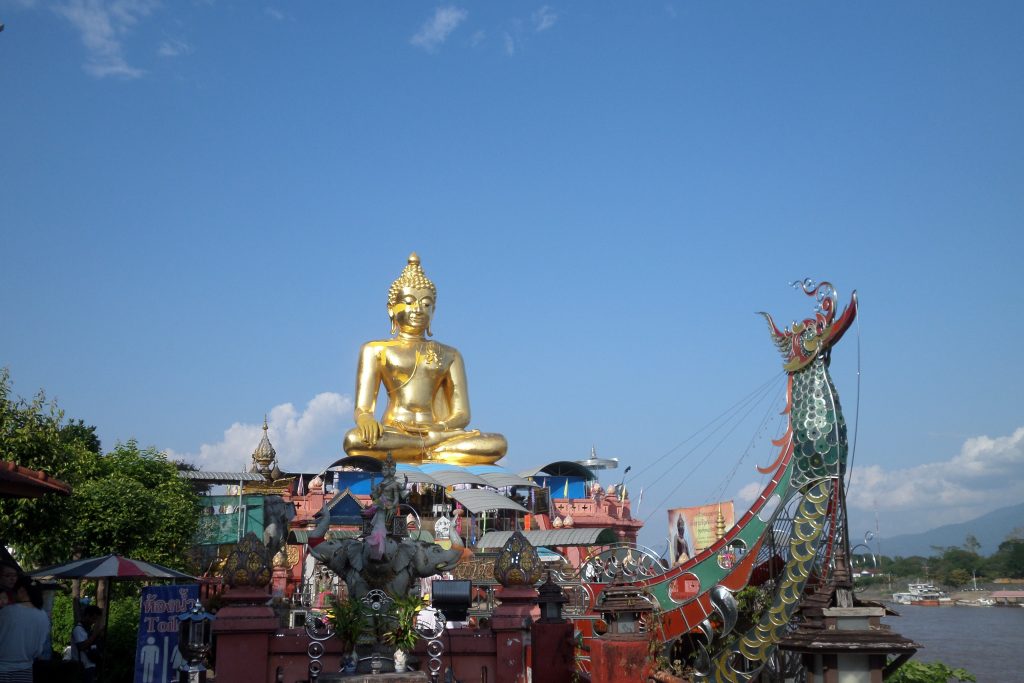
11. Accommodation
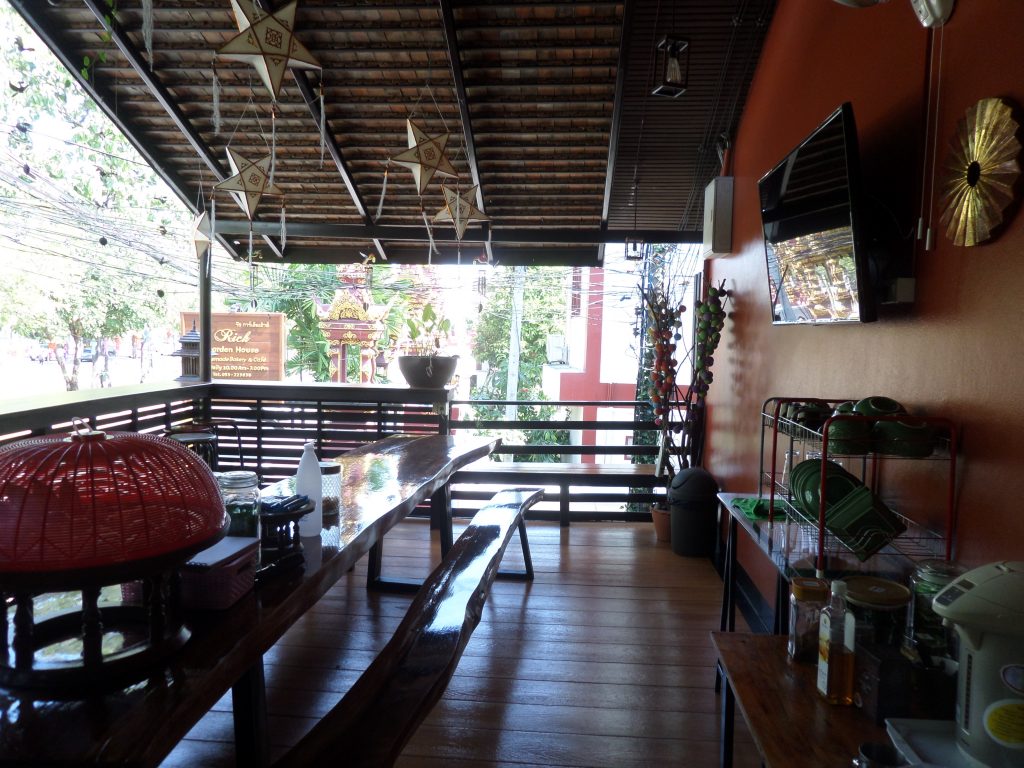
As I mentioned earlier in this article, many expats choose to live in Nimmanhaemin district, northwest of the city centre. This is a fashionable and more expensive neighbourhood, but if you are looking for five star hotels, this is the area to look.
If, on the other hand, you want to be near the tourist sights and the historical centre, find a hotel or a guest house within the square: the historical centre surrounded by the city wall and the moat. I don’t think it makes a lot of difference where in the centre you are, everything will be within walking distance.
Guesthouses and small hotels will charge you at least 800 baht a night for a budget room, but if you stay longer (like I did), it is quite possible to get a discount. I paid 500 a night in a very nice and comfortable small hotel, Hoh Guesthouse in Sri Poom road because I stayed for a month. This place gets wonderful reviews on Booking.com, I myself also wrote one and gave the place the maximum 10 points – perfect in every respect. You can check availability and book and room there on Booking.com. Choosing a hotel outside of the historical centre is also fine, but take it into consideration that most sights you will want to see will be within the walled centre. You can check out other attractive options here on the map:
Booking.com12. Food and shopping
Chiang Mai is full of small restaurants, especially in the historical centre. Some of them specialize in certain foods such as khao soi, but most of them will offer a wide range of local food. The simple ones in the city centre will probably be very cheap, charging not much more than 50 baht for any dish. If you want a more elegant option, you will probably find something in the Nimman district.
In the centre, there are also very nice cafés, a lot of them with open air sections, and I loved sitting in some gardens with a coffee and a fruit juice. Espresso is available at many places, but unfortunately, it is expensive and not very good.
For shopping, you can try the weekend markets, which are night markets, so expect them to open at around 5pm.
Maya shopping mall is in Nimman, and is one of the most famous ones in Chiang Mai. I found the prices too high though, but then, I am not into buying fashionable clothes for example. If you are, you may find lot os options in Nimmanhaemin road.
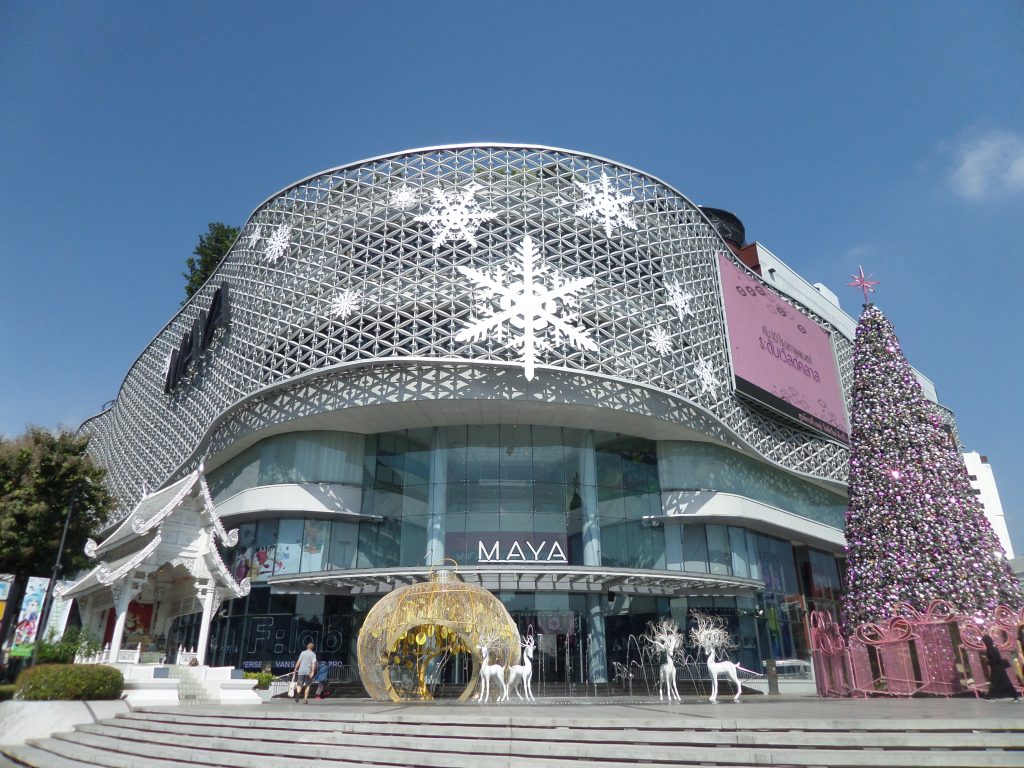
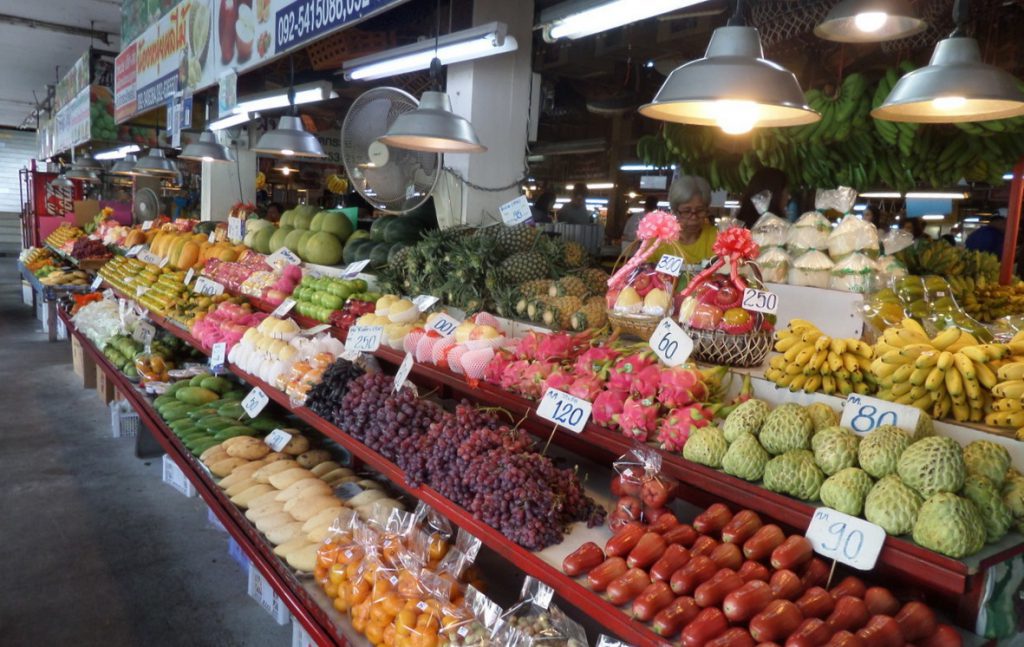
13. How to get to Chiang Mai
Chiang Mai is one of the most famous and most popular destinations in Thailand, which means that getting there will be very easy. It has an international airport very close to the city, and you van get to and from the airport using a public bus for a few baht only.
I flew from Chiang Mai to Bali with a stop at Bangkok Don Muang airport (see my experience with Airasia’s flythrough ticket in this post), but it’s very easy to get to Chiang Mai from other major destinations too. It is, however, impossible to fly direct to Chiang Mai from neighbouring Myanmar: you will have to make a detour to Bangkok first, which seems rather crazy, but that seems the only easy option, unless you want to explore the possibilities of a bus ride perhaps.
If you are coming from Bangkok, there is also a direct train, and you can choose the night train too, with a sleeping carriage. However, tickets are sometimes quite difficult to get, so if you want to travel by train, book ahead. There are buses, too, which I didn’t try, so I can’t comment on that.
